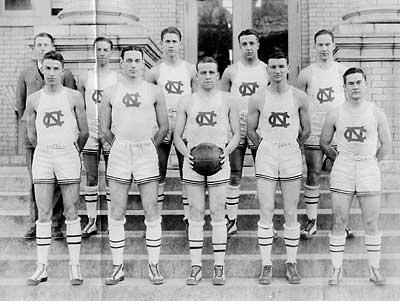Michigan Will Not Re-Hang Its Vacated ‘Fab Five’ Final Four Banners: Why It Makes Sense
Posted by EJacoby on May 22nd, 2012Evan Jacoby is a regular contributor for RTC. You can find him @evanjacoby on Twitter.
Sports fans worldwide recognize The Michigan ‘Fab Five’ team from 1992 and 1993 as one of the most talented and fascinating teams in college hoops history, but 20 years later, the Ann Arbor university wants no part of the infamy. The Fab Five comprised a starting lineup of all freshmen (before it was in vogue) and became famous in equal parts for its revolutionary style, brashness and incomprehensible talent. Those two, along with four other Wolverines teams in the 90s, were erased from the NCAA history books thanks to admissions of players accepting hundreds of thousands of dollars from recruiting booster Ed Martin. In addition, Michigan received a 10-year penalty from the NCAA requiring disassociation from the guilty players and teams, leading to the removal of the ’92 and ’93 Final Four banners from the Crisler Center. That ban will end in 2013, but the news from over the weekend is that the university doesn’t plan on doing anything about it. Despite an upswell of support, there are currently no plans to re-hang the Final Four banners or recognize anything from the Fab Five era, a decision that’s clearly irked the former players but one that makes a lot of sense from a publicity standpoint. The stance taken by UM upholds the school’s integrity, and it knows that all sports fans will regardless still remember the Fab Five.

The Fab Five Will be Remembered Forever, Even if Michigan's Crisler Center Says Otherwise (Detroit Free Press photo)
No vacation of wins, removal of banners, or lack of contact with former players is going to cause college basketball fans to forget about the Fab Five era. Even Wolverine recruits who were not yet born when Chris Webber, Jalen Rose, and company changed the college game in the fall of 1991 are aware of the Fab Five and its legacy. This is something that UM administrators fully understand and can take advantage of when handling the issue of historical recognition. Continuing to withhold association with the Fab Five teams on campus in Ann Arbor sends a strong message, and yet it will never erase the great memories from those teams in the eyes of fans worldwide. “What happened was not good, and I don’t think they’ll ever go back up. I don’t,” said Michigan president Mary Sue Coleman in reference to the vacated banners. And why should she feel any differently?










































